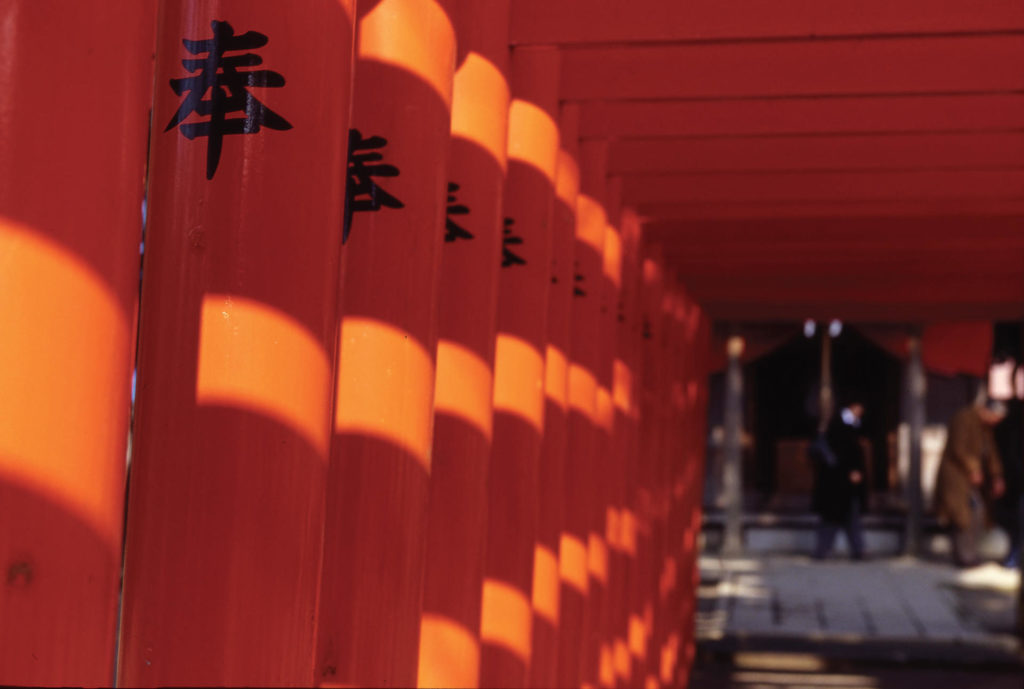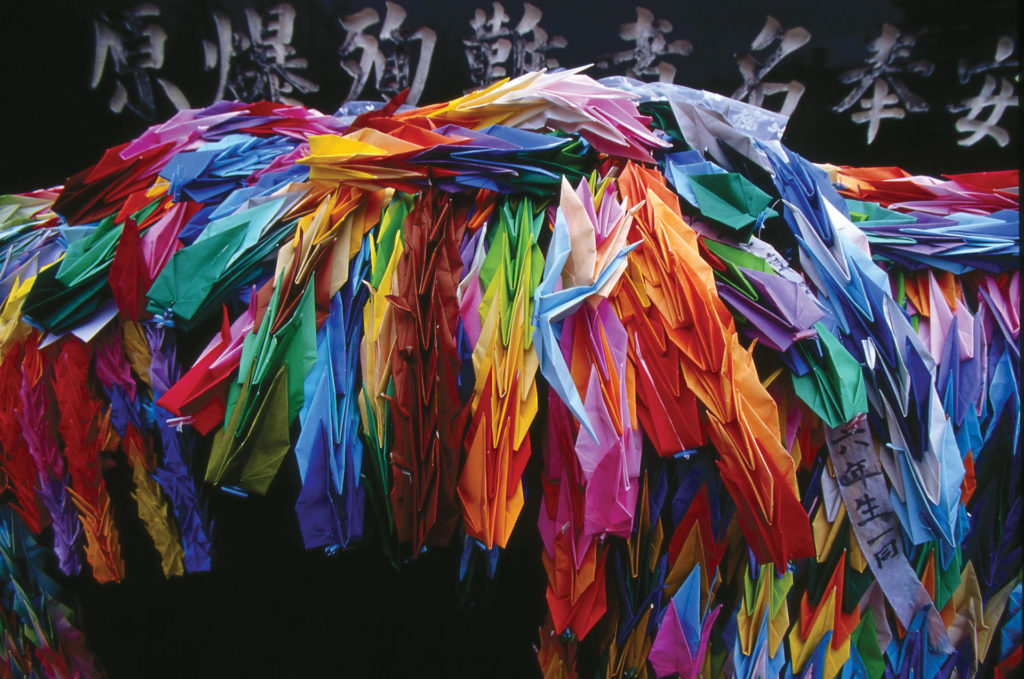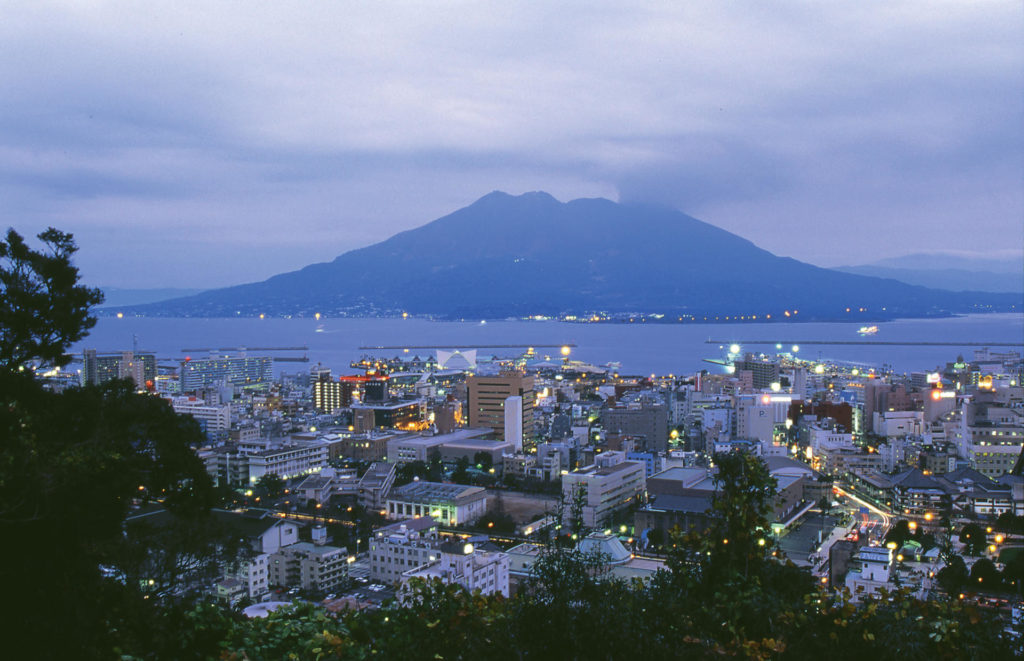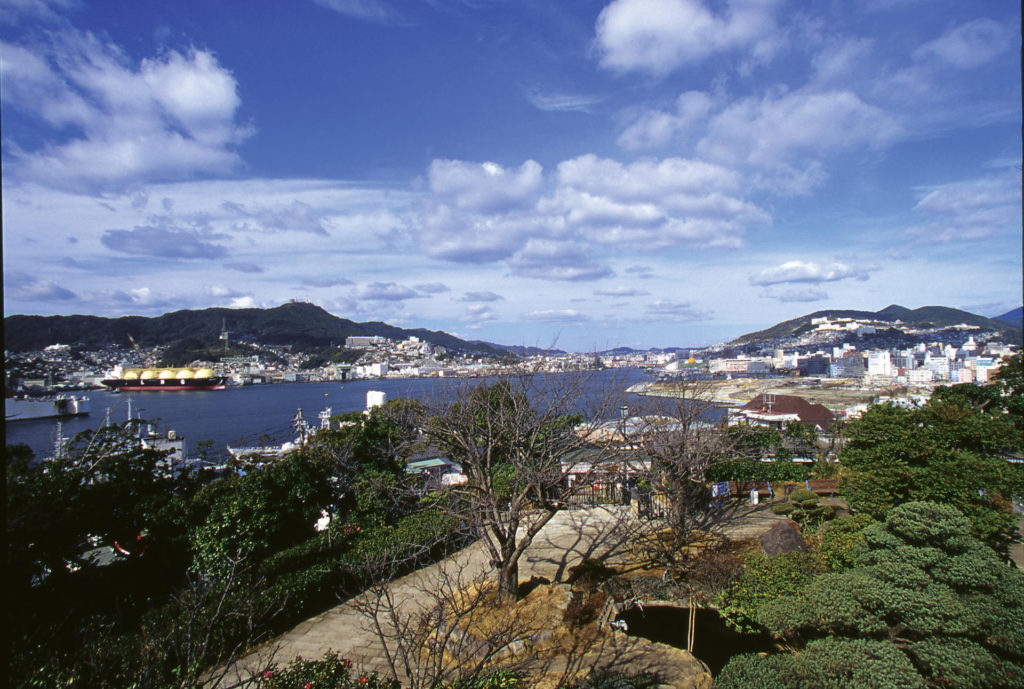Budget travel in Japan? Impossible, you say? Think again. With a little planning and spending discretion, it’s entirely possible, and an enjoyable way to explore southern Japan.
I have resided in Japan for more than a decade but have only once, in my first year, explored the country beyond the Osaka region where I have lived for the past 12 years. One reason for the delay is the exorbitant cost of travel here—or so I thought.
I recently spent 15 days in Kyushu for about ¥8,500 a day. That’s a bargain for a trip across this southern island of active volcanoes, onsen (hot springs), rolling mountains and affable people.
My biggest expenses were lodging and transportation. I stayed at youth hostels averaging ¥2,800 a night. Low-end ryokan and minshuku cost about ¥3,500. For transportation, I used the seishun-ju-hachi-kippu, which, for ¥11,500, buys five days of unlimited travel on Japan Rail’s (JR) local trains. Early to rise and early to bed curbed nightlife expenditures and, when possible, I cooked at the hostels.
I first visited Miyazaki, arriving by ferry from Osaka, but headed straight to nearby Aoshima, a tiny island with a shrine whose deity is the god of relationships. I passed two hours fascinated by the diminutive island’s wild fauna and exposed plate-like rock called “Devil’s Washboard.”
KAGOSHIMA

The next morning, I was off to Kagoshima. From the train I spied stepped rice paddies and farmhouses, gurgling rivers and the origami folds of verdant mountains. It was surprisingly unlike the Japan I had come to know.
I was told I might need an umbrella in Kagoshima, as the dust fall from the Sakurajima volcano across the bay is as frequent as rain. But the mountain behaved itself and clear skies prevailed.
I checked into Nakazono Ryokan and. for fun, hopped on an old fashioned tram. I alighted at Naples St. and wandered along the shady banks of the Kotsuki River. By the time I reached Takamibashi Bridge I had seen a lot of statues commemorating bygone heroes.
Lord Shimazu, instrumental in the modernizing of Japan during the Meiji Restoration (1868-1912), was one of the most significant. His family welcomed foreign contact when the country was essentially closed.
Today, Kagoshima’s citizens enjoy both foreign and domestic influences. Art is one of them. The Kagoshima City Art Museum (¥200) was featuring paintings and sculptures by local teens. Across town at the Teoribata no Satou silk kimono factory (free), I was introduced to weavers who explained the 40-step process. No wonder it takes a year to make just one garment.
Kagoshima’s din is tempered by its bayside setting; the area features ample parks, a mesmerizing aquarium, even the fickle peak of Sakurajima. I took a three-hour ’round-the-mountain bus tour (¥1,700) through lava fields and disheveled villages. No one seemed concerned about the hill’s constant grumblings.
NAGASAKI

If Kagoshima was historically open, Nagasaki was positively foreign. The city was an international commercial hub long before the Atomic Bomb erased it from the map. However, the Shogunate expelled foreigners in 1637, except for the business-minded Chinese and Dutch.
The Dutch were so liked, in fact, that a year earlier the Shogunate ordered the construction of a private island to house them. Until 1855, the fan-shaped Dejima was the only place in Japan where Western contact was permitted. The island disappeared in a 1904 land reclamation project, but its faithfully reconstructed buildings (mainly free, except the main buildings ¥300) are marvelous.
After Japan’s doors re-opened, western pioneers moved in. They made fortunes in everything from breweries to importing arms, and they built themselves big houses. Glover Gardens (¥600) features Japan’s oldest examples of western architecture. In all, six homes relocated from their settlements adorn the grounds. The hillside neighborhood also affords splendid harbor views.
In the morning, I visited Peace Park (free) and the Atomic Bomb Museum (¥200), located in the northern neighborhood of Urakami. The bomb detonated here at 11:02 a.m. on Aug. 9, 1945, killing 75,000 of the city’s 240,000 residents. It flattened virtually everything within a two-kilometer radius.
Inside, the exhibitions and testimonials are graphic and emotional. Outside, Ground Zero and the park are graced by sculptures from other nations. All express wishes for peace. Strings of colorful paper cranes, a Japanese symbol of hope, are seen everywhere.
I liked Nagasaki and thought I could happily live there, but I had a train to catch to Kumamoto. As it chugged by the Ariake Sea, fisherman appeared silhouetted amid oyster and seaweed farms in the morning light. Down the line, hot-air balloons drifted like candy raindrops.
KUMAMOTO

Most of Kumamoto’s tourist attractions, including its 400-year-old castle, were closed for year-end holidays. I visited Honmyo-ji Temple (temple entrance free; treasure house exhibits ¥300), three kilometers from town. The mausoleum of Kiyomasa Kato, architect of the castle, is here. Visitors are more intrigued by hundreds of ishidoro stone lanterns that line the slope to the temple.
In town, I walked around the formidable nine-meter high walls of the castle. I picnicked on the grass next to the purling Tsuoboi River, which forms a natural moat. The city’s centerpiece was home to a feudal lord. Though they were destroyed by fire in 1877, modern reconstructions leave little to the imagination.
Across town, Suizenji-Jojuen Gardens further exemplify Kumamoto’s glory days. Built 300 years ago by Lord Tadatoshi Hosokawa, this formerly private garden (¥400) depicts the 53 stations along the bygone Tokaido Road (Tokyo-Kyoto), including a miniature Mt. Fuji and islands in the spring-fed lake.
Aso National Park was a short jaunt away. It’s the pinnacle of Kyushu’s pock-marked volcanic face. It encompasses an 80-km. wide crater which formed about 100,000 years ago. Today, the valley is a tapestry of farmland and villages.
At the center rise five peaks, of which Mt. Nakadake is still active. White smoke signals its volatile moods. Eruptions are so unpredictable that emergency shelters have been built on the rim for visitors brave enough to peer down into its bubbling depths.
The hilltop was caked in snow and shrouded in clouds and looked nothing like the green meadows I saw in the Aso Trekking Route Map (free from the tourist office). So I hitched a ride from Aso Town to Kusasenri (bus ¥470) and walked around the frozen plain whose name means “a thousand miles of grass.”
The weather created a mystical atmosphere. I couldn’t imagine the cattle that graze here in summer. Instead, my imagination was captivated at the Aso Volcanic Museum (¥840), adjacent to the field, to where I retreated for warmth. The volcano comes alive here in its photos and explanations.
From Aso’s heavenly heights I descended into Beppu’s jigoku, or hells, natural vents bubbling with 98-degree C water. The city itself seemed non-descript until I noticed plumes of steam rising from pipes, manhole covers and backyards all over town, though nowhere more so than the Kannawa area where most jigoku are located.
The Umi Jigoku (Sea Hell), named for its blue water, is set in a tropical botanic garden. A basket of eggs was boiling in the hell, and giant Victoria Amazonica water lilies were floating on the adjacent pond. At Shiraike Jigoku (White Pond Hell), named for its milky-white water, there was also an aquarium with various species of “man-eating” piranha.
After twice being to hell and back, it was time for some bathing. I wanted to cook myself into pink, supple wrinkles. And, if the Beppu Hot Spring Area Guide were to be believed, all my bodily ailments would be cured.
So I spent most of my time naked in Beppu, hopping from one onsen to another. I was boiled in Ekimae Koto’s fiery bath, battered in Takegawara’s sand bath and chilled in Hamawaki Koto’s cold bath. Best of all was basting in Hoyoland’s outdoor mud bath.
I left Beppu for home slightly overdone. My wobbly legs just managed to get me to the ferry. The vessel lulled me to sleep, and Kyushu felt like a dream.

USEFUL INFO
GETTING THERE
The overnight Miyazaki Express ferry [Tel: (06) 6616-4661] departs Osaka Nanko Ferry Terminal at 7:30 p.m. and arrives at 8:20 a.m. at Miyazaki City Port. Tickets are ¥6,800 for floor space in a large communal room or ¥9,300 for a bunk bed in a 12-person room. Private hotel-like rooms are available from ¥20,000-¥30,000. From Beppu to Osaka, Kansai Kisen ferry [Tel: (06) 6572-5181] operates two boats, one departing at 5:00 p.m. arriving in Osaka 8:40 a.m. (with stops in Matsumoto and Kobe), and a non-stop 7:00 p.m. departure with a 6:20 a.m. arrival. Prices and bed options are similar to the Miyazaki Express. Bookings for all ferries can be made through a travel agency.
GETTING AROUND
Seishun-ju-hachi-kippu (literally “youth-18-ticket”, though available to all ages) costs ¥11,500 and provides five days of unlimited travel mainly on local JR trains. Available during school holidays. (Approx. dates: Dec. 10 – Jan. 20, Mar. 20 – April 10, and July 10-Sept. 10) Sold at JR stations.
PLACES TO STAY
Miyazaki: Miyazaki Ken-Fujin-Kaikan (Miyazaki City, Youth Hostel): Tel: (0985) 24-5785, ¥2,750.
Kagoshima: Nakazono Ryokan (Kagoshima City): Tel: (099) 226-5125, Web: www.satsuma.ne.jp/myhome/shindon. Creaky wood floors, cozy rooms, shared facilities, free laundry for ¥4,000.
Nagasaki: Nagasaki Youth Hostel: Tel: (095) 823-5032, ¥2,800.
Kumamoto: Higoji Minshuku (Kasuga Ward): Tel: (096) 352-7860. Mr. Baba will pick you up from the train station if you call him upon arrival. Private room with TV and hilltop city view, ¥3,000.
Aso: Aso Youth Hostel: Tel: (0967) 34-0804. ¥2,450.
Beppu: Beppu Youth Hostel: Tel: (0977) 23-4116, fax: 22-0086, ¥3,360.
HOT SPRINGS
Beppu Jigoku: Entrance fee is ¥400 to each jigoku or ¥2,000 for a book of tickets to nine jigoku. Booklets on sale at all major jigoku.
Beppu Onsen: Onsen cost from ¥100-¥1050; bring your own towel and soap. Generally open from 7 a.m. – 10 p.m.




